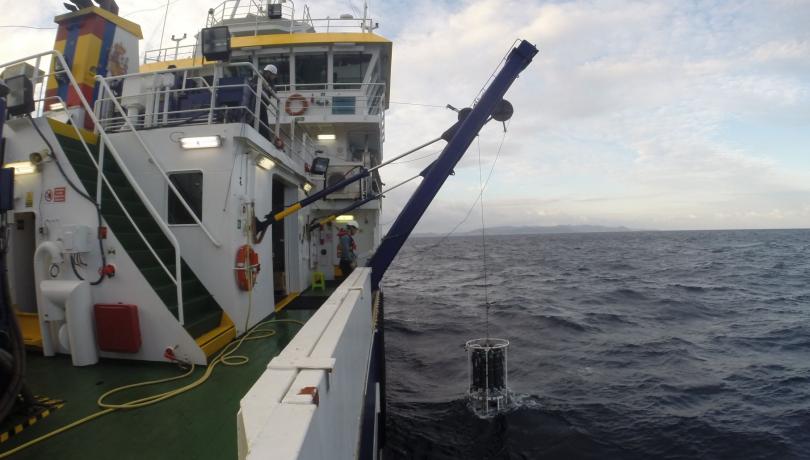This is the main conclusion of a study in which the ICM-CSIC has participated that evaluates the physical effects of climate change on Spanish Mediterranean waters.

Researchers from the oceanographic centers of Malaga, Illes Balears and Central Services of the Spanish Institute of Oceanography (IEO, CSIC) in collaboration with the Institut de Ciències del Mar (ICM-CSIC) and the Balearic Islands Coastal Observing and Forecasting System (SOCIB) have found that the temperature and salinity of the Mediterranean are increasing throughout its depth range, from the surface to the deepest layers. They have also detected that surface water temperature is increasing at a "very intense" rate.
The IEO has been monitoring the Mediterranean waters off the Spanish coast, including the Balearic archipelago, since 1992. Currently, this monitoring is carried out under the umbrella of the observation program RADMED: Time Series of Oceanographic Data in the Mediterranean, funded by the IEO itself.
In 2022, on the 30th anniversary of the beginning of these activities in the Mediterranean, the Mediterranean Climate Change Group (GMCC) of the IEO began the ambitious project of reviewing and analyzing all the information obtained over these three decades to make a rigorous assessment of the changes that the Mediterranean region is undergoing. To complete this information, other institutions that also maintain observation systems in the Mediterranean, such as the ICM-CSIC and SOCIB, collaborated with the IEO to compile existing data from international databases.
Among the most remarkable results of this work, published recently in the Journal of Marine Science and Engineering, is the verification that temperature and salinity of the Mediterranean are increasing from the surface to the deepest layers. In addition, the study highlights the sharp rate at which the temperature of surface waters is increasing, ranging from 2ºC/century in the Alboran Sea to nearly 3ºC/century off the Catalan coast.
The work also measures the rate at which waters absorb heat, and finds that this is similar to that of other parts of the planet (0.46 W/m2). However, it shows that the intensity and frequency of marine heat waves have increased significantly over the last 30 years. Finally, the work confirms the results recently published by the same research group, which showed an increase in sea level of around 2.8 mm/year, with an intensification of these trends since the early 1990s.
"Work such as that carried out for more than 30 years in the framework of the RADMED program makes it possible to obtain historical series of data with which it is possible to evaluate the state of health of the Mediterranean and the effects of global change on its ecosystems", says Manuel Vargas, researcher at the Oceanographic Center of Malaga and first author of the work.
The study has been co-financed by the European Union through the European Maritime Fund for Fisheries and Aquaculture (FEMPA) within the National Program for the collection, management and use of data from the fisheries sector and support for scientific advice in relation to the common fisheries policy; the Horizon 2020 EuroSea framework program project; and the MALACCA project of the National Infrastructure Plan.